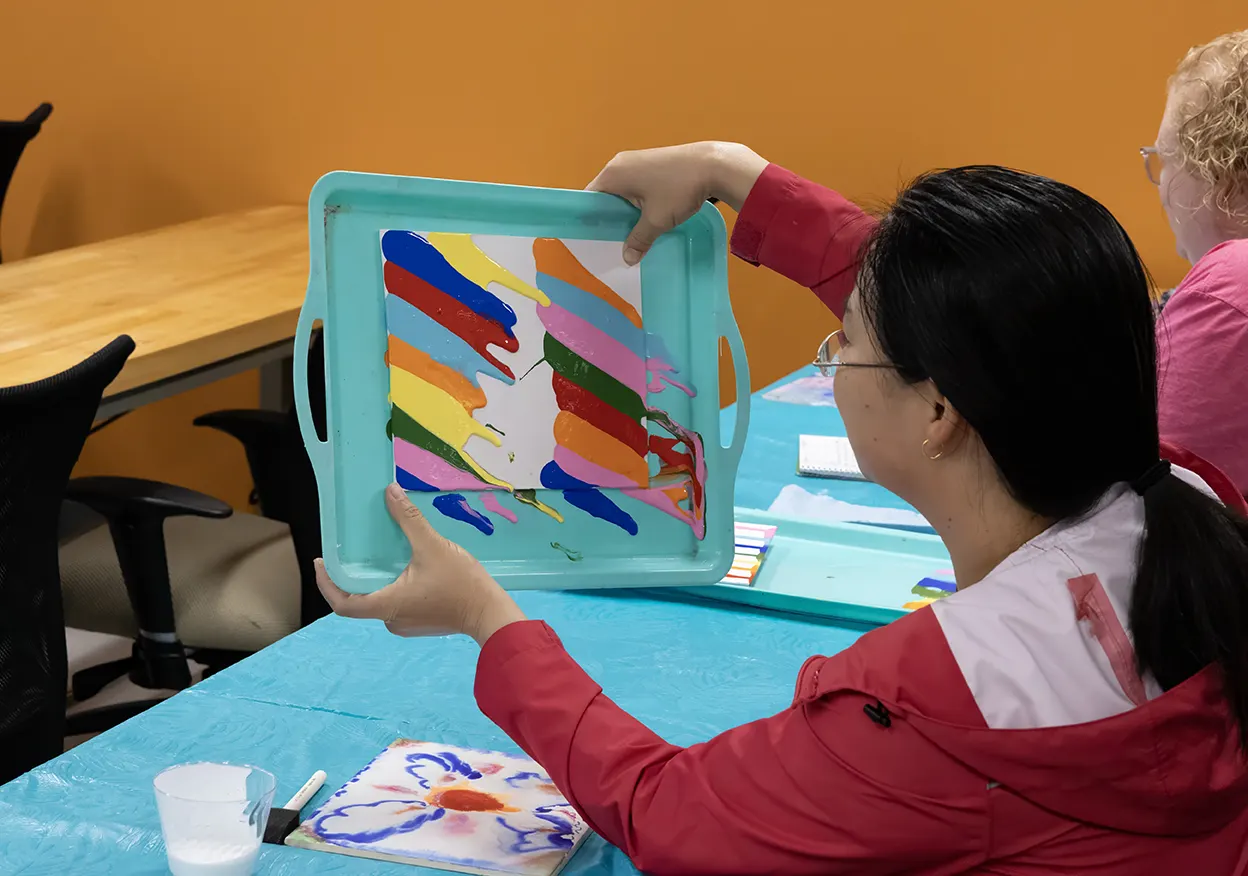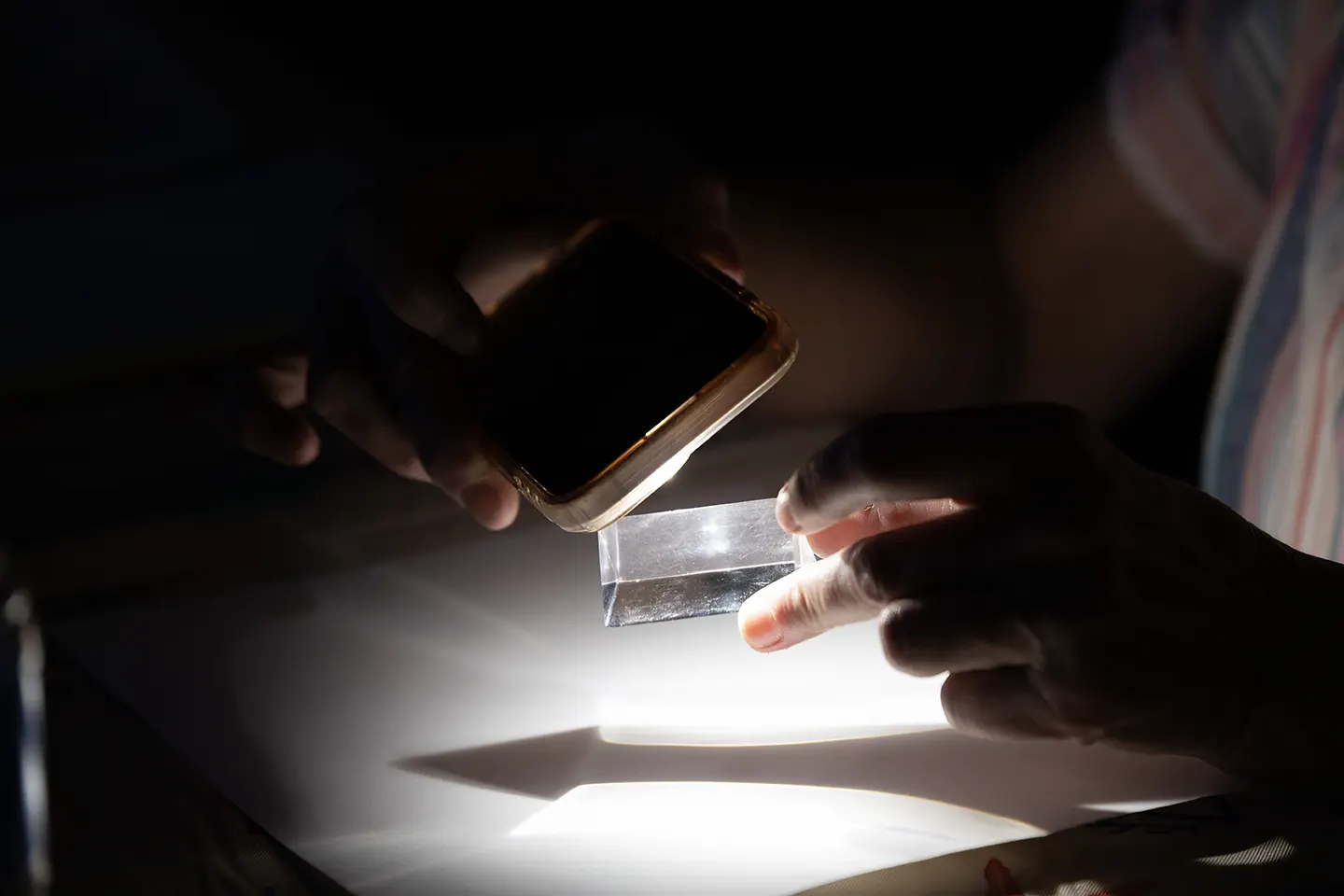
While some students may take naturally to science, technology, engineering and math (STEM), others may be more inclined to the arts. That’s why integrating arts and crafts into STEM, and creating STEAM, is a great way to engage students with these concepts. That’s what teachers from around the East Tennessee region learned about in Scientific Studio, a professional development course offered by ORAU on June 19.
In Scientific Studio, teachers of different grade levels and subjects participated in art projects that serve as a gateway to STEAM. Spraying rubbing alcohol on sharpie designs is a vehicle to learn about solvents. Pouring paint on canvas can help students learn about gravity. And tracing rainbows cast by prisms becomes a lesson on light wavelengths.
“Teachers can incorporate art into any subject that they teach,” said Jessica Ordóñez, education director at the Children’s Museum of Oak Ridge (CMOR), who taught the seminar. “Especially science.”
Ordóñez incorporates these types of lessons into summer camps and other educational events at CMOR, but they’re also applicable in the classroom.
The teachers who participated in the seminar got a firsthand look at why these types of lessons are so fun by completing the projects themselves, discussing why their students would enjoy them and different applications for different grade levels.
“I think my students are going to love these projects,” said Beth Sandidge, who teaches art at Philadelphia Elementary School. “I’ve got to make sure I do it at the right grade level and the right group, but I’m sure I’ll find that they’re going to be very excited about these process pieces.”

Sandidge explained that she’s excited to incorporate more of the vocabulary terms she learned through Scientific Studio into her lessons, laying the groundwork for her students as they learn about these concepts in their science classes.
In addition to serving as introductory lessons for scientific concepts, mixing art and science is also another way for students to have fun with learning. Ordóñez said that students love gravity painting because it creates an excuse to be messy, and they often race to see which paint drips will reach the bottom of their canvas first. However, her favorite of these lessons is rainbow-tracing with prisms.
“When you do this lesson with students—and even when you do it with teachers—you see the wonder in their eyes,” she said. “They try different angles of the prism and different types of light. It’s one of those science topics that’s good for everyday life. You don’t have to be a scientist to understand how light works.”
Much like mixing paint on a palette, mixing science and art can create a masterpiece, a valuable lesson these teachers will take back to their classrooms.